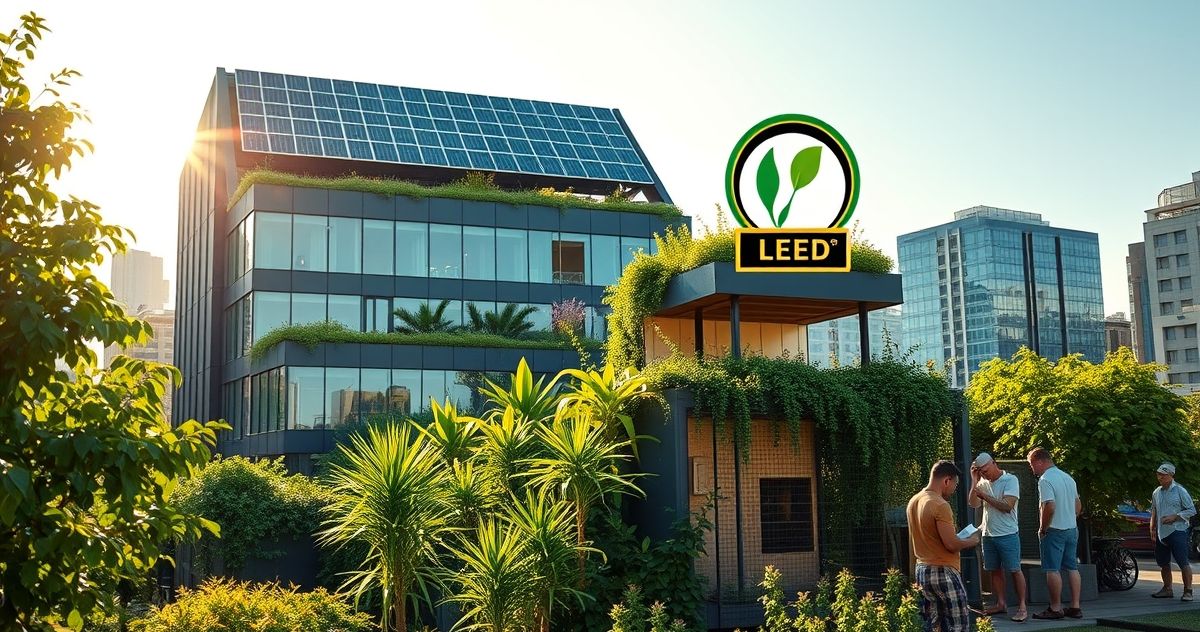Understanding the Sustainable Building Maintenance Credit
The Sustainable Building Maintenance Credit is a tax incentive designed to encourage the ongoing upkeep of environmentally friendly buildings. It aims to reduce energy consumption, promote sustainable practices, and decrease greenhouse gas emissions by incentivizing businesses and property owners to invest in the maintenance of sustainable features. The credit supports the broader goal of environmental conservation by providing financial benefits to those who commit to reducing their building’s carbon footprint.
Primary Purpose and Importance
The primary purpose of the Sustainable Building Maintenance Credit is to promote environmental responsibility among building owners and managers. By offering tax credits, the government encourages the adoption of sustainable practices that lead to a reduction in energy and water usage, thus minimizing environmental impact. The significance of this credit lies not only in fostering ecological conservation but also in helping businesses and property owners reduce operational costs. These cost savings can be reinvested into further sustainability initiatives, creating a positive cycle of environmental stewardship.
Key Features and Components
There are several key features and components associated with the Sustainable Building Maintenance Credit:
- Eligibility Criteria: Buildings must meet specific sustainability standards, such as LEED certification or other recognized benchmarks, to qualify for the credit.
- Maintenance Activities: The credit covers a range of maintenance activities, including regular inspections and upgrades to energy-efficient systems like HVAC, lighting, and water heaters.
- Documentation: Detailed records of maintenance activities and certifications must be maintained to support the claim for the credit.
- Financial Limits: The credit may be capped at a certain percentage of expenditure, with limits varying based on building size and type.
Compliance and Filing Requirements
Claiming the Sustainable Building Maintenance Credit requires meeting specific filing and compliance requirements:
- Application Process: Property owners must submit a detailed application, including all required documentation, to the relevant tax authority. This includes proof of sustainability certifications and records of maintenance activities.
- Annual Filing: The credit must be claimed annually, with continuous adherence to eligibility criteria to qualify for subsequent years.
- Audit Compliance: Tax authorities may conduct audits to verify compliance with the credit’s requirements, so maintaining accurate and comprehensive records is crucial.
Penalties for Non-Compliance
Failing to comply with the requirements for the Sustainable Building Maintenance Credit can result in penalties:
- Denial of Credit: Inaccurate or insufficient documentation may lead to the denial of the credit for that year.
- Fines and Fees: Deliberate misrepresentation or fraudulent claims can result in fines, interest, and penalties.
- Increased Audits: Non-compliance may trigger additional scrutiny from tax authorities in subsequent years.
Significance in Tax Resolution and Financial Compliance
The Sustainable Building Maintenance Credit holds significant potential for tax resolution and financial compliance strategies. Businesses can leverage this credit to mitigate their tax burden by effectively integrating sustainable practices into their operations. This not only provides immediate financial relief through tax reductions but also aligns organizations with broader societal goals of environmental conservation.
The financial significance extends beyond immediate tax savings. By investing in sustainability, businesses and property owners can reduce utility expenses, increase property value, and enhance their corporate reputation. These long-term benefits contribute to the economic viability of sustainability efforts, turning initial expenditures into long-term savings and asset appreciation.
Furthermore, participation in such programs demonstrates corporate responsibility and can improve stakeholder relations, attracting more socially conscious customers and investors. This strategic alignment with environmental goals underscores the role of sustainable practices as a cornerstone of modern financial planning and compliance.
Conclusion
The Sustainable Building Maintenance Credit is a strategic tool that underscores the intersection of environmental responsibility and financial prudence. By offering tangible tax incentives, it spurs the adoption of sustainable practices within the property sector. For businesses willing to engage with and invest in the long-term health of the planet, the credit offers not just immediate financial benefits, but also positions them as leaders in the movement towards a sustainable future.
For property owners and managers, understanding and leveraging this credit is crucial to optimizing both their tax position and their contribution to environmental sustainability, making it a vital component of any comprehensive tax or financial planning strategy.

